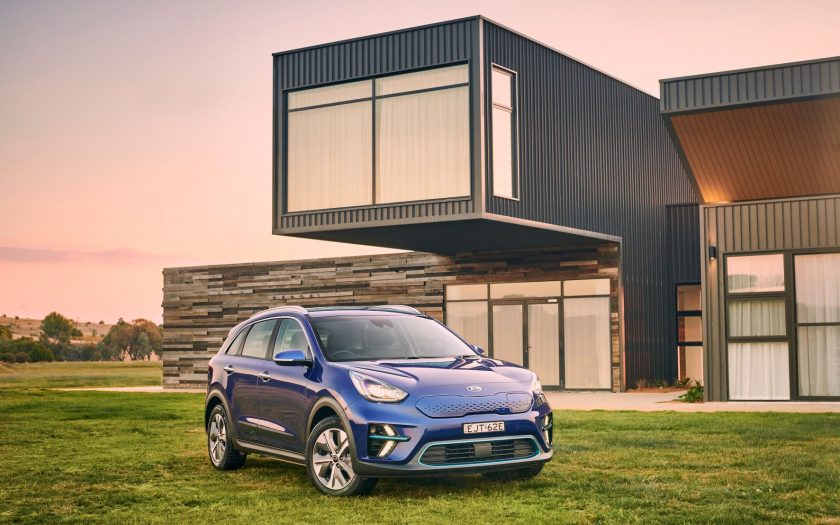Chris Riley tests the 2022 Kia Niro Electric S with pricing, specs, ride and handling, safety, verdict and everything the over-50 driver needs to know.
Summary: Finally, there are some EVs worth buying, and the Kia Niro is one of them, if you can afford the entry price.
2022 Kia Niro Electric S
Pricing: $62,590 (plus on road costs, $67,490 driveaway; Niro Hybrid from $39,990, $41,990 driveaway). Premium paint (all but Clear White) add $520.
Warranty: Seven-years, unlimited km
Battery warranty: Seven-years, 150,000km
Battery capacity: 64kWh
Safety: Not tested (Hybrid and PHEV five-star ANCAP rating)
Engine: electric motor, lithium-ion battery
Power: 150kW
Torque: 395Nm
Nominal charging time: 1740 minutes
Fast charge time: 75 minutes
Official range: 455km
Transmission: single-speed automatic, front-wheel drive
Body: 4375mm (long); 1805mm (wide); 1570mm (high)
Weight: 1791kg
Towing capacity: 300kg (braked and unbraked)
Boot capacity: 451 litres, 1405 litres with rear seats folded
Wheels: 17-inch alloy
Tyres: 215/55R17
Turning circle: 10.6m
Official consumption: 15.9kWh/100km
Consumption on test: 13.3kWh/100km (518km)
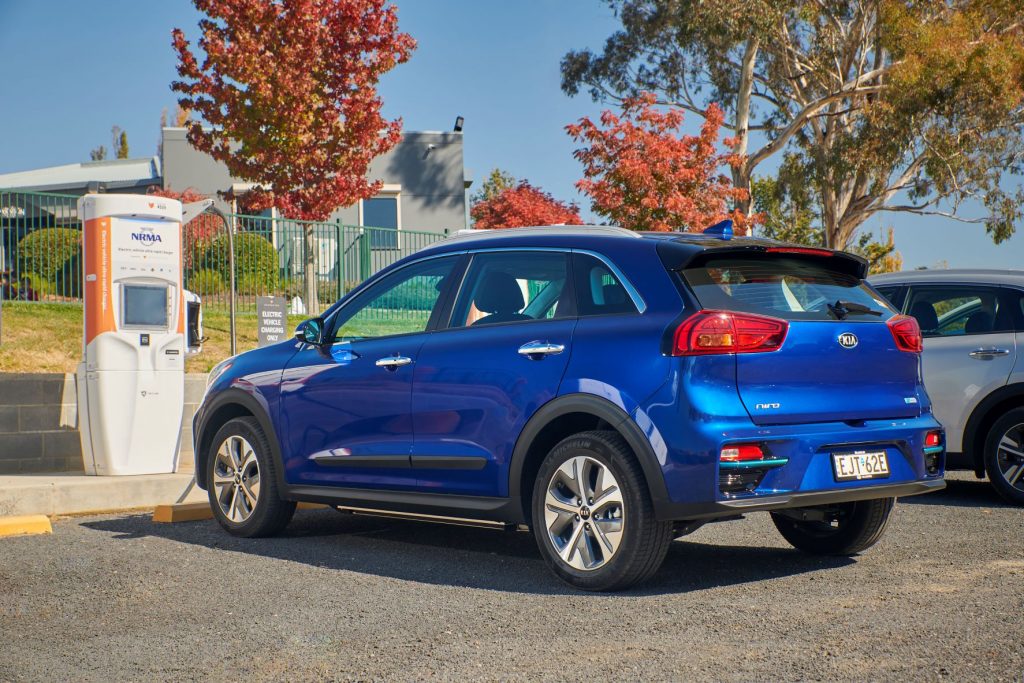
[review]
What is it?
Kia Niro is a small to medium-sized, five-seat SUV that comes in hybrid, plug-in hybrid and fully-electric form.
The styling is a bit, dare I say, ordinary, with its no longer needed, closed off radiator grille – but beauty is in the eye of the beholder.
All things considered, this is the first electric vehicle we’d actually consider buying. As a daily driver, it’s doable – and here’s why.
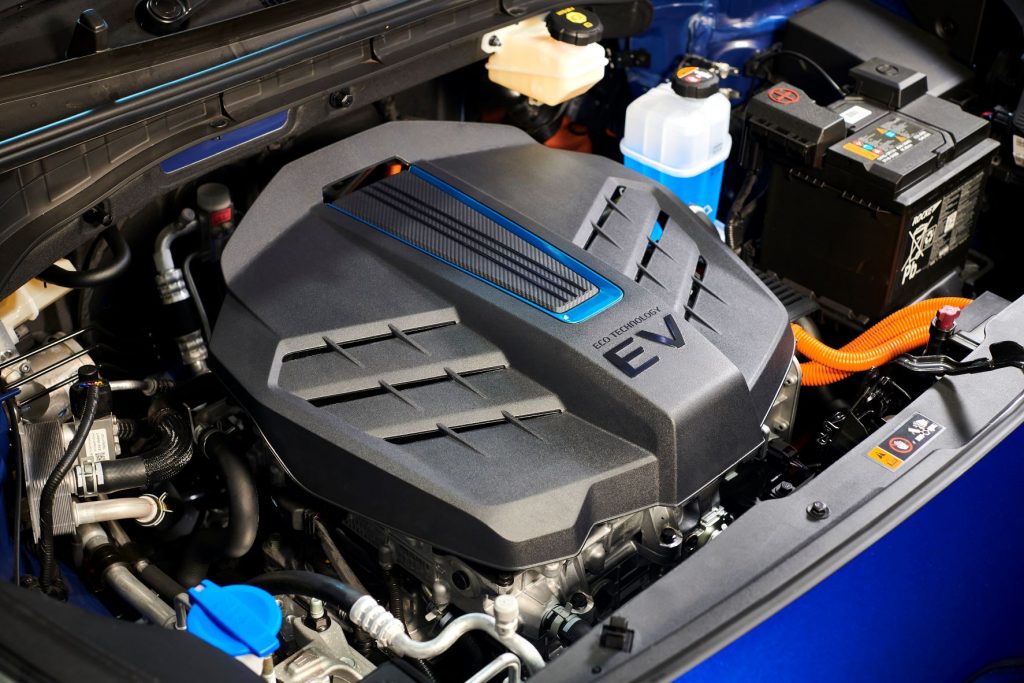
What’s it cost?
Niro is priced from $39,990 for the hybrid, but the one we are interested in – the Niro Pure Electric – starts from $62,590.
There are two grades to choose from: S ($62,590) and Sport ($65,990). Premium paint adds $520 and includes all colours apart from Clear White (there are two whites).
While the price may be a little steep for some, the good news, in NSW at least, is that the State Government announced last year it would abolish stamp duty on EVs, offer buyers a $3000 rebate as well as removing stamp duty – to increase uptake.
Other states are sure to follow, or risk being left behind, as the move to EVs gains momentum.
Yeah, Yeah, I hear you say, but the Government also wants to charge owners per kilometre to use the road.
That’s right, but it’s not due to come into effect until 2027 – and a lot of things could change between now and then.
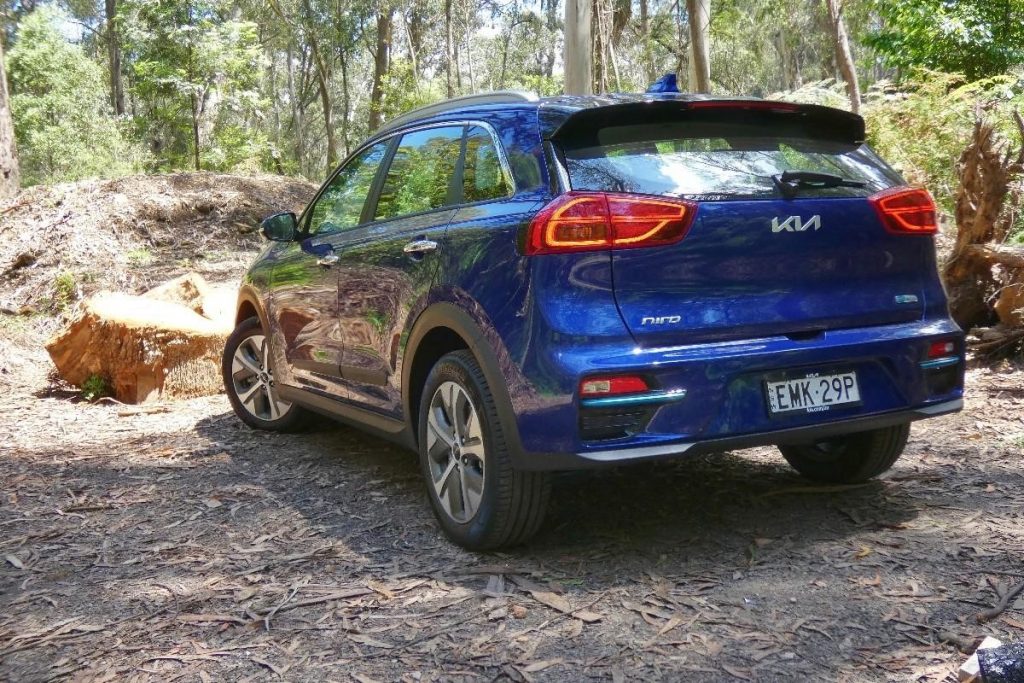
The entry model Niro gets single-zone air conditioning with rear vents, 8.0-inch touchscreen, electronic parking brake with auto-hold, smart cruise control, regenerative braking, 17-inch aerodynamic alloy wheels, auto light and wipers, reverse parking sensors with dash display and solar glass for the windshield and doors.
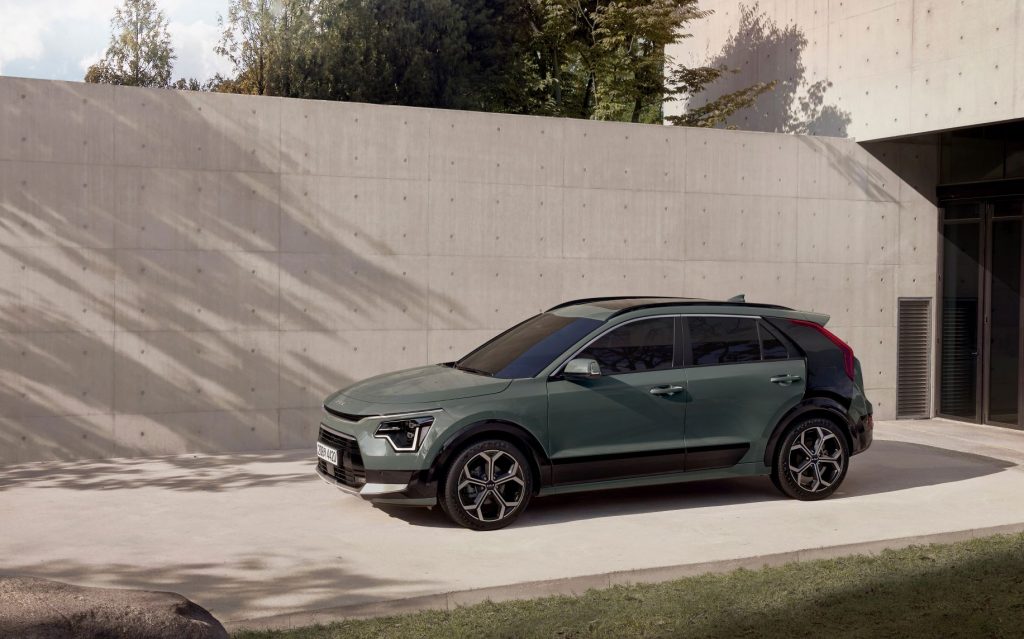
Sport retains single zone air, but adds LED headlights, a 10.25-inch touchscreen with built-in navigation, auto high beam, rear view camera with in-audio screen display and dynamic parking guidelines, plus premium seats, alloy sports pedals, auto up and down front windows and an electrochromatic rear-view mirror.
Entry S gets combination cloth and leather trim, while Sport lists premium trim (presumably leather).
Read the fine print and it says leather-appointed may comprise genuine leather, polyurethane and other man-made materials – or a combination thereof.
Wireless Apple CarPlay and Android Auto with voice recognition are standard, but weirdly more expensive Sport only gets the wired version of both.
There’s also DAB Digital Radio with AM/FM tuner, while Sport also gets 8-speaker premium JBL audio with a subwoofer in the boot.
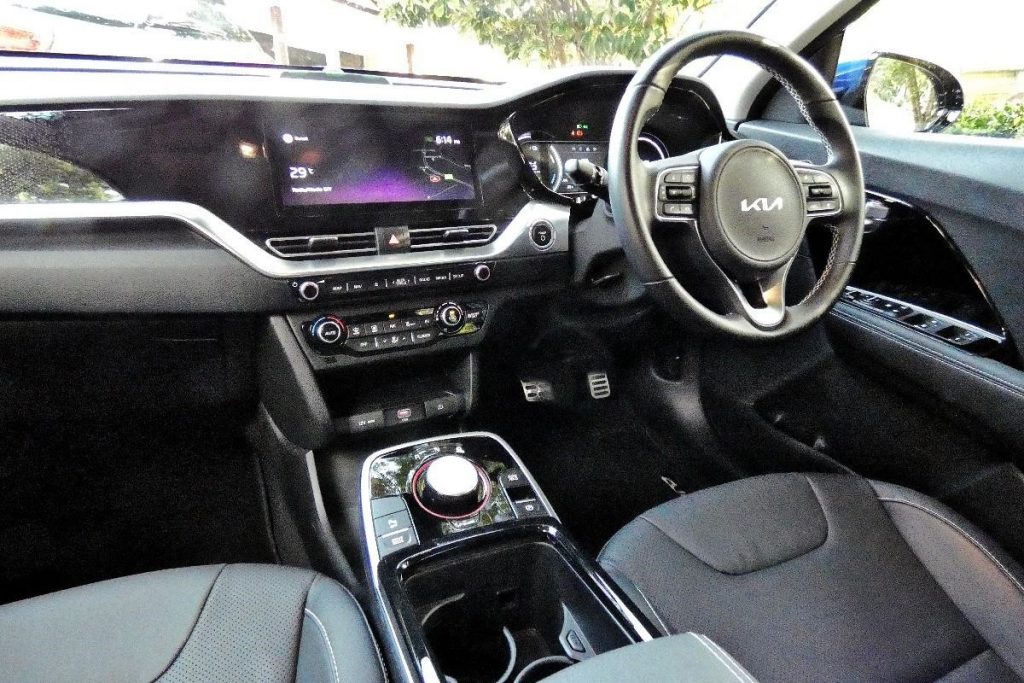
Across the range there are seven airbags, including driver’s knee bag, along with Autonomous Emergency Braking (car/pedestrian/cyclist), Lane Keep Assist, Lane Follow Assist, Smart Cruise Control and Driver Attention Alert.
Sport adds Blind Spot Detection and Rear Cross-Traffic Alert.
The Niro EV is covered by a 7-year/unlimited kilometre warranty, while the battery is subject to a 7-year/150,000km warranty.
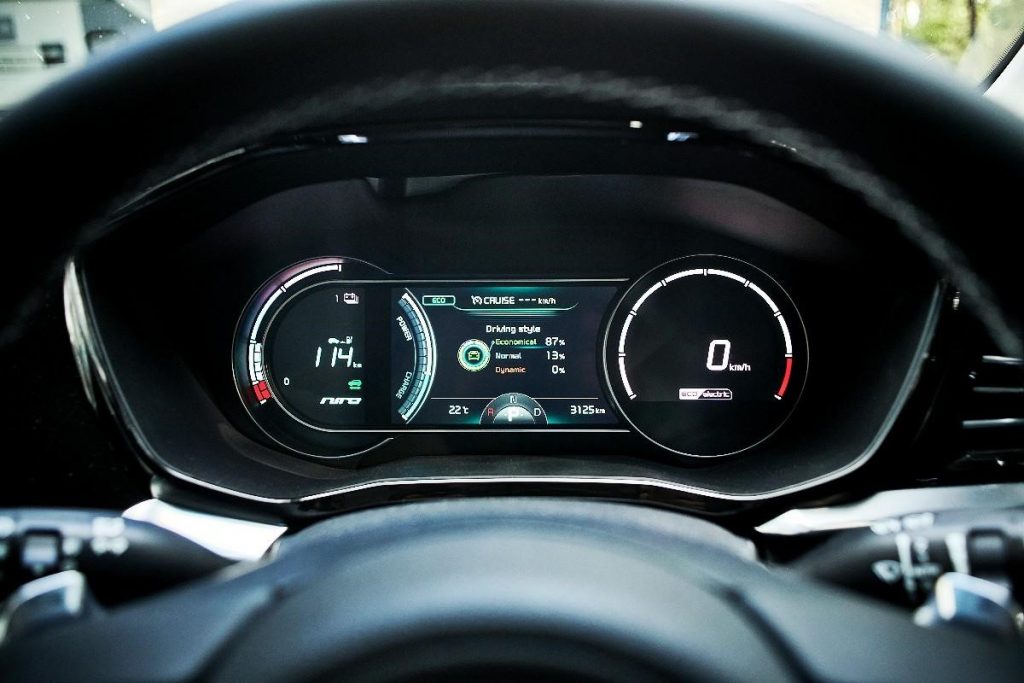
What’s it go like?
Niro shares its powertrain and battery configuration with the Hyundai Kona Electric, but is larger with a longer wheelbase.
Its electric motor generates 150kW of power and 395Nm torque, the latter from 0 all the way to 3600 rpm – talk about a flat torque curve!
It is paired with a single-speed transmission that drives the front wheels, and has a conservative top speed of 167km/h.
The large 457kg liquid-cooled, lithium-ion battery pack has a capacity of 180Ah and 64kWh, and is secreted under the floor.
Just like a petrol car, range depends on the size of the tank and the rate it uses fuel – in this case the battery and energy consumption.
With a 64kWh battery and energy consumption of 15.9 kWh/100km, it can travel a maximum of 455km between charges.
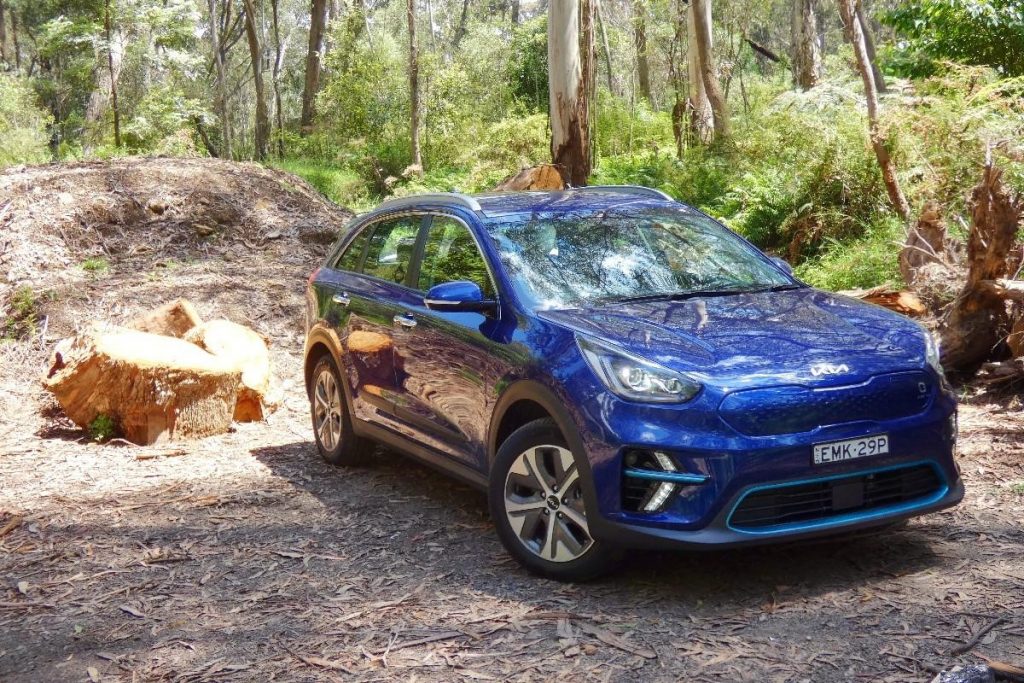
Over the course of a week, we travelled 548km at a rate of 13.3 kWh/100km, with a 91 percent economy rating – charging the car just the once.
There’s four selectable Drive Modes – Eco, Eco+, Normal, Sport – and each has a different effect on things like the air-con and electric motor torque profile.
A ‘virtual’ engine sound compensates for lack of noise from the electric motor. If you don’t like it, you can turn it off.
Unlike hybrid versions, the EV is fitted with smaller, aerodynamic, 17-inch alloys and 215/55 R17 Michelin Primacy 3 rubber.
Niro dates back to 2018 and this goes some way to explaining the low-rent, old-tech feel of the cabin which doesn’t align with the $60K plus asking price.
For example, the instrument cluster is dominated by two analogue gauges, which although digital, lack the eye-candy of Kia’s more recent releases.
The infotainment screen is embedded in the dash, instead of upright and separate as is the norm.
The trim ticks the box, but is a bit of a let-down – almost generic.
For mine, if you’re being asked to pay a premium – then the car should look and feel… well… premium.
This is not to detract from the performance, however, because the way the Niro EV drives and handles is a breath of fresh air.
It’s fun, super responsive and has sufficient range to make a week between recharges feasible, depending of course on your circumstances.
Believe it or not, it even handles – although the ride is a bit on the firm and at times bouncy side.
Punch the accelerator and Niro surges forward, back off and it pretty much brakes itself – you don’t need to touch the brake pedal.
Combine this with a low centre of gravity and an ability to corner flat, and there’s a surprising amount of fun to be had on winding roads.
When it comes to EVs, the two things people are most interested in are: range and the time it takes to recharge the car.
We kinda like the fact the charge port in Niro is located at the front which obviates the need to back it in every time you get home.
Charging, unfortunately, takes ages unless you pay for something with more oomph than the powerpoint in the garage.
The basic charge cable supplied with the car can take up to 29 hours to fully charge the battery from empty.
Even with a 7.2kW AC wall charger a flat battery will take nine hours and 35 minutes to recharge.
DC Fast charging, from 0-80 percent, takes 75 minutes with a 50kW charger or 54 minutes with a 100kW unit.
Mind you, we haven’t laid eyes on a 100kW charger – are they available?
Charging is accomplished via a Type 2 AC or CCS Combo 2 DC connection.
Note though that not all chargers you come across support all types of connection, and may require an adaptor.
Satnav by the way keeps track of the nearest charge station.
Looking closer you can set the date and time you want the car to be ready, and when to charge the battery to make use of off-peak tariffs.
As well as charging from a power source, regenerative braking captures energy that tops up the battery on the run.
Because of this, a long downhill journey may use little or none of the precious charge.
In fact, you might gain a few kilometres.
The energy is collected when the vehicle is decelerating, either through direct braking or by the use of the steering wheel paddles.
On Sport variants three levels of regenerative braking can be selected via steering wheel paddles.
EV models also have the option of Smart Regenerative System, activated by pulling and holding the right paddle.
When this is activated, the system controls the braking level based on the gradient and driving style of the car in front through radar.
One Pedal Braking, enabled by holding the left paddle, can effectively bring the car to a halt.
The boot by the way is quite large and deep, because the battery pack is under the passenger floor.
However, a tyre re-inflation kit is provided in lieu of a spare wheel.
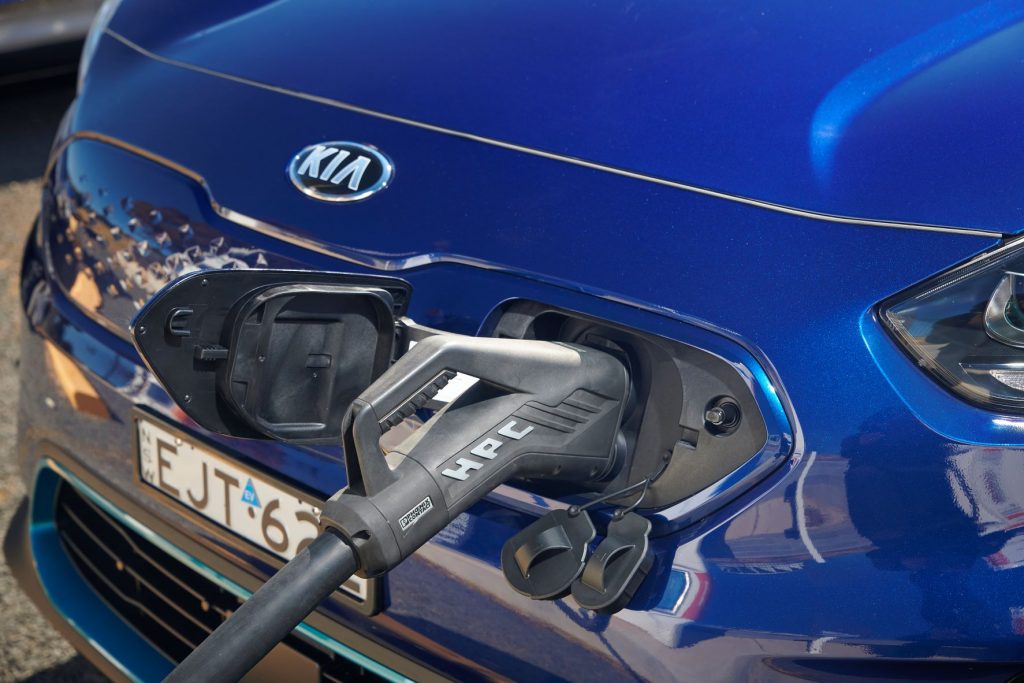
What we like
- Fun to drive
- Range compares with petrol car
- Lots of storage in centre console
- Generous rear legroom
- Rear air vents
- Good-sized boot
What we don’t like
- Price, of course
- Low rent cabin
- Dated instrumentation
- No wireless phone charger
- Annoying lane change assist
- Manual seat adjustment
What over-50s need to know
Kia says it is considering lower-cost, shorter-range models if research finds buyers are interested.
Personally, we think that’s a bad move, sacrificing long-term goodwill for short-term gain.
How can putting buyers into a car that will not satisfy their needs be a good thing?
As it stands Kia Niro Pure Electric is fun to drive and has sufficient range to serve as a daily driver.
The only stumbling block remains the price.
News to hand that an updated model is on the way, probably sometime next year, is exciting.
For senior drivers keen to make the switch to an electric vehicle the Kia Niro is a great starting point.
If the price is no deterrent, see your Kia dealer and ask to take one for a drive.
I’m sure, like me, you will be impressed.
This is the very latest technology and believe it or not, it actually works.
The Niro offers all the practicality of a small to medium-sized SUV, in a car that doesn’t use any petrol.
You can plug it into a powerpoint, install a charger at home or visit one of a growing number of commercial chargers available at shopping centres and the like where you can have a coffee while it is charging.
You’ll be the talk of the town.
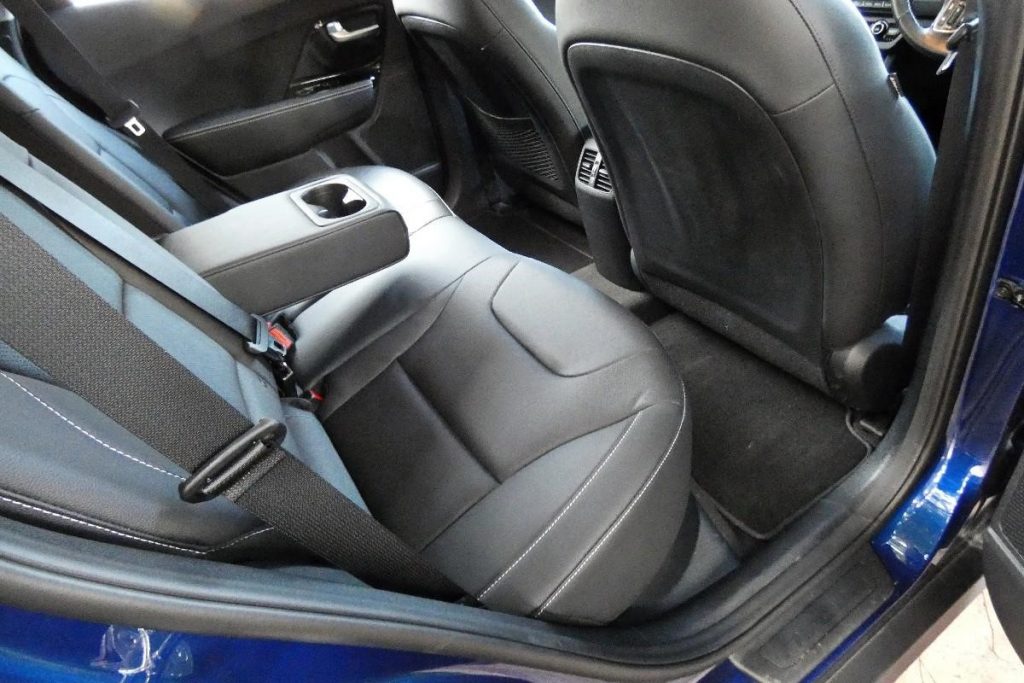
seniordriver comments
Unlike Chris, seniordriveraus tested both the Hybrid and the plug-in Hybrid version of the Kia Niro.
It’s worth reminding yourself that the Niro has been around in other markets since 2017, so some of its more dated aspects are understandable. And there is a new model on the horizon – probably later in 2022.
The PHEV is considered by many intending buyers as something of an interim measure, reaffirmed to some extent by Kia’s predictions that 70 percent of buyers will opt for the hybrid, 20 percent for the full EV and just 10 percent for the plug-in model.
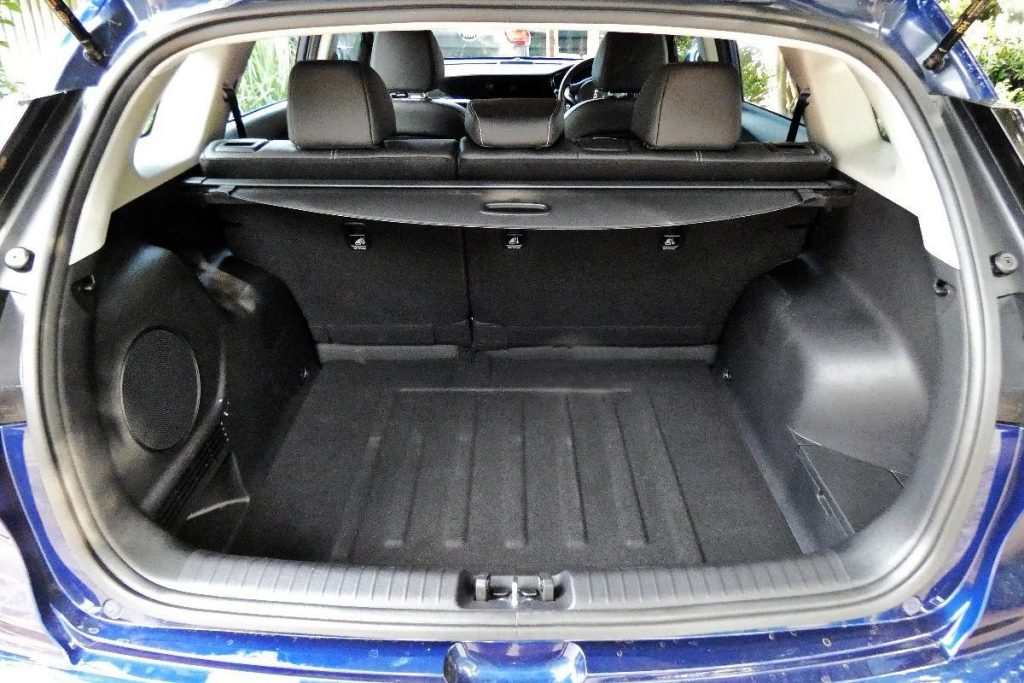
“Our” Niro HEV Sport was quoted at a driveaway price of $45,990 (plus a further $520 for premium paint). The PHEV Sport comes in at $53,990 (driveaway, but again, with another $520 for premium paint).
Both the HEV and the PHEV deliver substantial savings over the Pure Electric. The fully electric Sport is $70,990 driveaway. That means it’s priced at a $17,000 premium over the PHEV and a whopping $25,000 more than the HEV. As always, check with your dealer for the latest prices, and keep in mind that a new model is not far away.
We weren’t quite as critical of the interior as Chris, but we were driving the higher-spec Sport model in both cases. We agree, however, that the part-digital, part-analogue instrumentation feels a little ordinary. And the lack of USB charging points in the second row is frustrating.
Unlike most other Kia models, the Niro makes do with a space saver spare wheel.
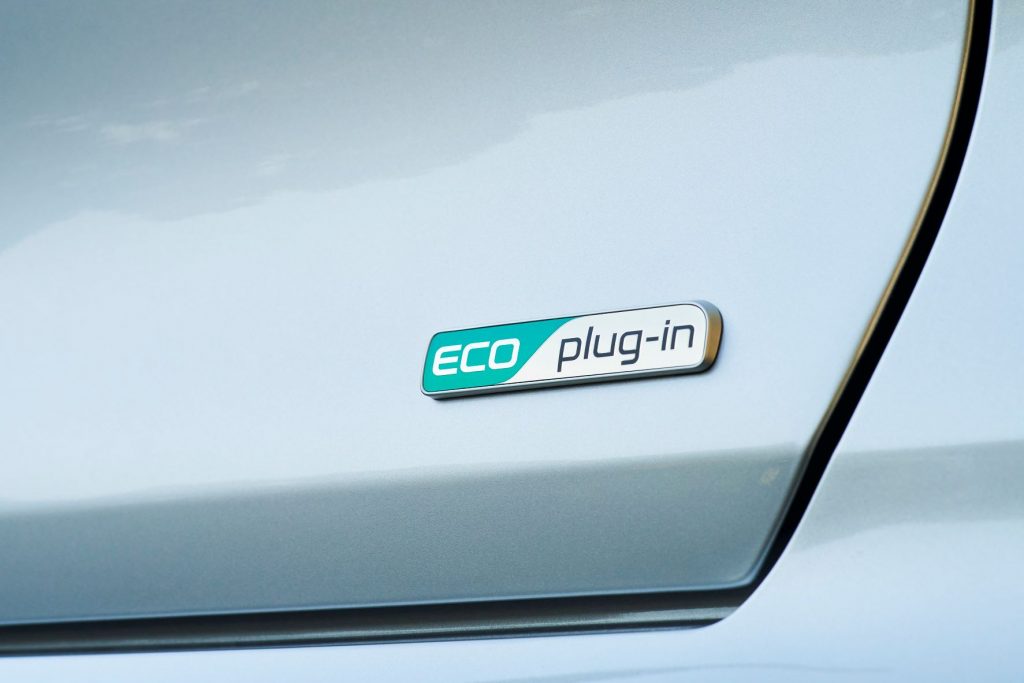
Kia claims the PHEV will manage 4.4L/100km using 91-octane unleaded fuel. As always with hybrids, fuel consumption can vary widely depending on usage. We bettered Kia’s figure by quite a margin, using just 3.4L/100km over 213km. Although the Niro will move off the line in EV mode, even slightly heavier application of the throttle sees the petrol engine kicking in. And lead foots will quickly see battery capacity falling alarmingly quickly.
Another advantage for the HEV and PHEV models of the Pure Electric Niro is towing capacity. Towing 1300kg (braked) is hardly earth-shattering, but it far exceeds the EV’s paltry 300kg (braked and unbraked).
Once again, we can only recommend that you carefully assess your driving needs before deciding on which model will best suit you. And keep in mind the substantial premium for the electric model that you will be unlikely to recoup even over years of driving.
